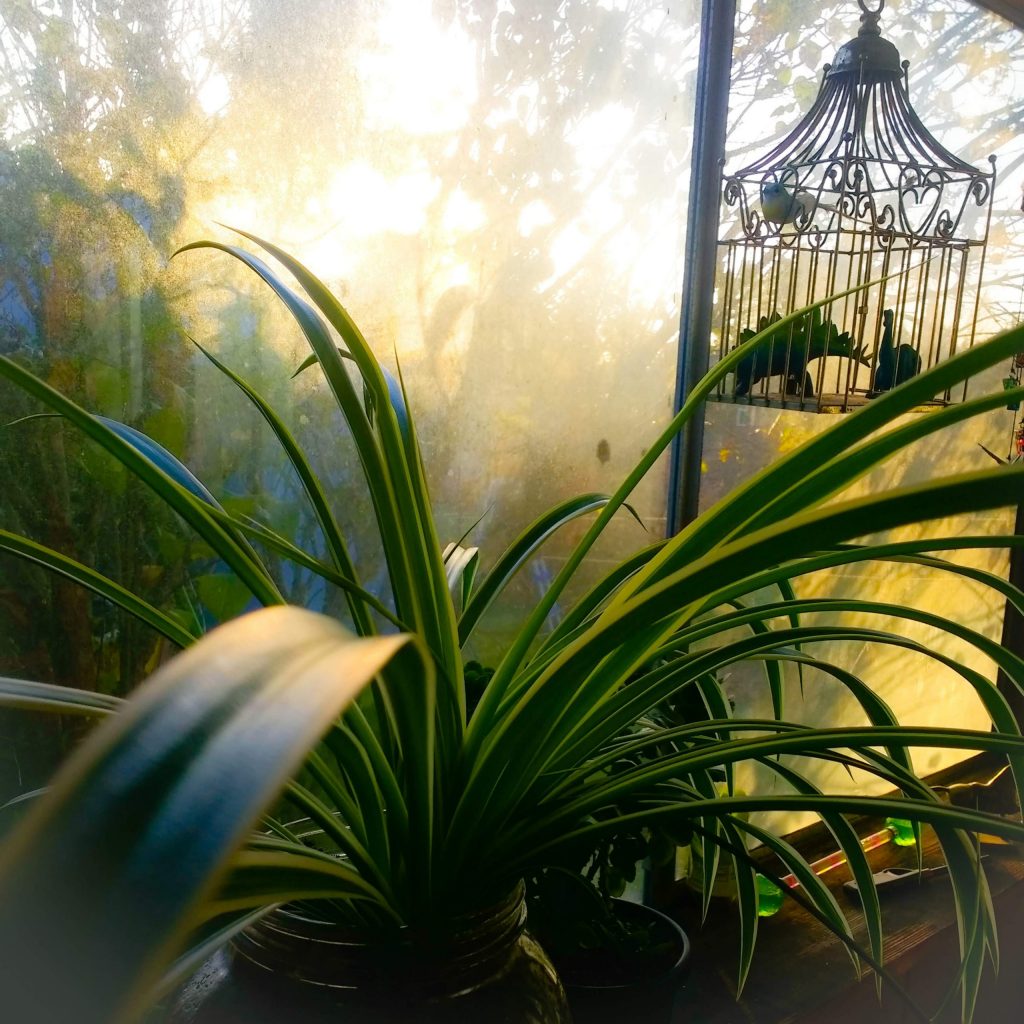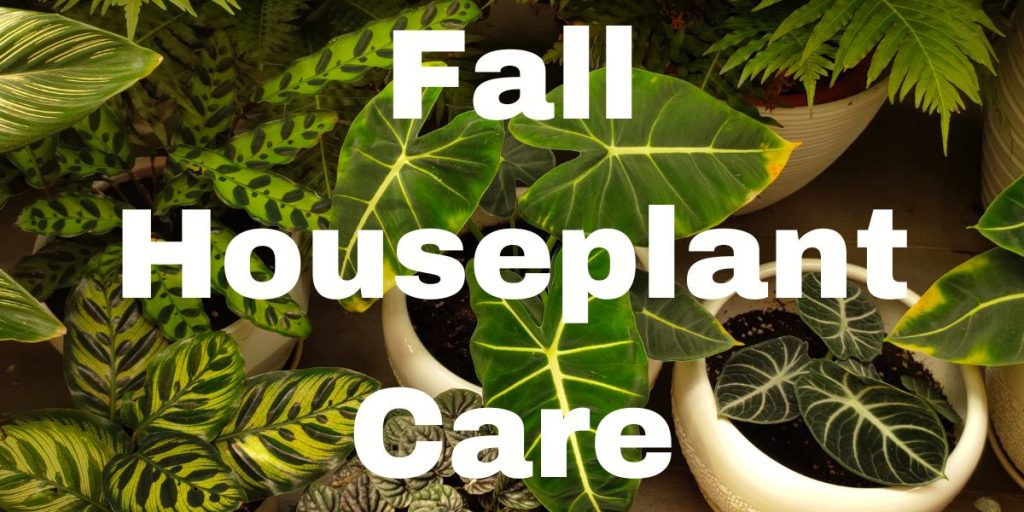Autumn is one of the most critical times of the entire year for houseplants. Because it is at this time of year that thermostats are turned-up and the air simply becomes too hot and dry for most tropical houseplants. But, by providing adequate humidity, a good location and proper water the plants should do just fine.
GREEN FOLIAGE PLANTS – the typical tropical foliage house- plants like philododendrons, ferns, spider plants, etc. should be fertilized sparingly the rest of this fall and winter. In fact, to fertilize them once every three months is enough during the fall and winter dormant season. Provide humidity and place in a bright light location in the home.
FLOWERING HOUSEPLANTS – plants like African violets, New Guinea impatiens, Hibiscus, Kalanchoe, and other flowering plants should be fertilized monthly, even during the fall and winter. Be sure they get maximum bright light and maybe even two to four hours of artificial light at night. Provide sufficient humidity.
GERANIUMS, FUCHSIAS AND OTHER OVER-WINTERED PLANTS – keep them in a basement, semi-heated garage, utility room or unused basement in a spot where temperatures remain above freezing. Cut the geraniums and fuchsias back to eight to ten inches. Water sparingly, fertilize sparingly if at all, and repot in February. In February the plants should be placed in a location with bright light, warm temperatures and these plants should be fertilized twice a month.
POINSETTIAS – Place them in a spot where they get fourteen hours of total darkness and ten hours of bright light, each day. Keep temperatures between 65 and 75 degrees. Fertilize monthly with 0-10-10. Christmas cactus takes the same light requirements but cooler temperatures of about 50 to 60 degrees and water them sparingly.
HUMIDITY – this is probably the most critical part of caring for houseplants during the fall and winter seasons. Yet it is probably one of the easiest problems to correct. All one needs to do is place a glass or vase of water near the houseplants, then as the water evaporates it provides the humidity the plants need. An even better way to provide humidity for houseplants is to take a waterproof tray, fill it with gravel, and then fill water halfway up the gravel. Set the plant on the gravel and this method will provide an island of humidity all around the houseplant. In our home we place several plants in a grouping, this helps provide a natural environment for the plants and a single glass of water or humidity tray is sufficient for providing humidity for all the plants. I do not recommend misting plants with water, as I feel this can create mildew or other disease problems on the indoor plant leaves.
LOCATION – Almost all houseplants will need more light exposure during the fall and winter months. So select a bright light exposure for them. Flowering plants may need two to four hours of artificial light at night in order to keep them flowering during the fall and winter months.
WATERING – Since most plants go into a semi-dormancy during the fall and winter months they should not require quite as much water as they do during the growing season. So check watering needs weekly to determine an exact watering schedule. One way to determine whether a houseplant needs water is to use a water metering device. Another, is to simply lift the plant, pot and all, if it is light you know it needs watering, if it is heavy then watering should be delayed a few days.
A little extra care at this time of the year will help keep your houseplants in tip-top shape this fall and winter.


Poinsettias never last too long. Will try to follow this advice.